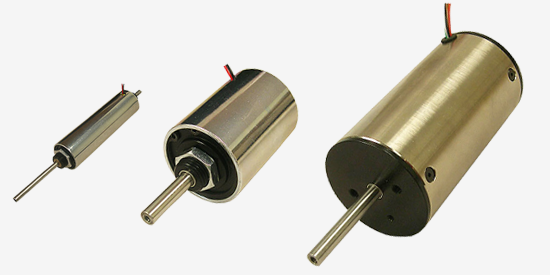What are Servo Motor Actuators?

Linear Servo Actuators are devices used to rotate or push parts of a machine with precision. These servo actuators are used in variety of applications such as toys, home electronics, automobiles and airplanes. If you own and operate a radio controlled airplane, personal use drone or a remote controlled car then chances are you have operated a servo motor actuator to move levers back and forth to control steering or adjust wing surfaces. A servo motor actuator regulates the speed of a fuel-powered car or aircraft by rotating a shaft connected to the engine throttle. Servo motor actuators are also found in devices we use every day. Servo motors used to move the hard drive head arms in computers are a perfect example of a servo motor found in everyday devices we use.
Another example of a servo motor used in our daily lives are automobiles where servos manage the speed of the vehicle. Much like a volume control button on a radio the gas pedal sends an electrical signal telling the automobile's computer how far down it is pressed. The computer then calculates that information along with other data received from other components and sends a signal to the servo attached to the throttle to adjust the engine speed.

Examples of Servo Motor Actuators. Direct Drive Linear Motor Actuators and Direct Drive Linear Motor Actuators with Encoder
How Do Servo Motor Actuators Work?
A servo system mainly consists of three basic components - a controlled device, a output sensor, a feedback system. This is an automatic closed loop control system. Here instead of controlling a device by applying variable input signal, the device is controlled by a feedback signal generated by comparing output signal and reference input signal.
When reference input signal or command signal is applied to the system, it is compared with output reference signal of the system produced by output sensor, and a third signal produced by feedback system. This third signal acts as input signal of controlled device. This input signal to the device presents as long as there is a logical difference between reference input signal and output signal of the system. After the device achieves its desired output, there will be no longer logical difference between reference input signal and reference output signal of the system. Then, third signal produced by comparing theses above said signals will not remain enough to operate the device further and to produce further output of the system until the next reference input signal or command signal is applied to the system. Hence the primary task of a servomechanism is to maintain the output of a system at the desired value.
Selecting The Appropriate Servo Motor Actuator For Your Application:
There are certain questions you must ask yourself before starting a project that uses servo actuators. After looking at your application requirements, you must determine how fast must the servo rotate from one position to another, how hard will it have to push or pull and if overshoot is allowed. Inexpensive servos will have less mechanical power to offer with less precision in their movements. Complicated servos will cost more but will move quicker, pull or push larger loads and move in a more precise manner (in certain cases within less than a 1 micron accuracy).
Controlling a Servo Motor Actuator:
Servo actuators take commands from a series of pulses sent from a motion controller (a computer or a radio). A pulse is a transition from low voltage to high voltage which stays high for a short time, and then returns to low. The servo actuator must be connected to a source of power and the control signal must come from a computer or other circuitry. Each servo actuator's requirements vary from one model to another. A system that passes information based on the width of pulses uses pulse width modulation (or PWM) and is a very common way of controlling motor speeds as well as servo motor posi
Video of a Direct Drive Linear Motor Actuator demonstrating high speeds and high accuracy.
- 27th May 2015